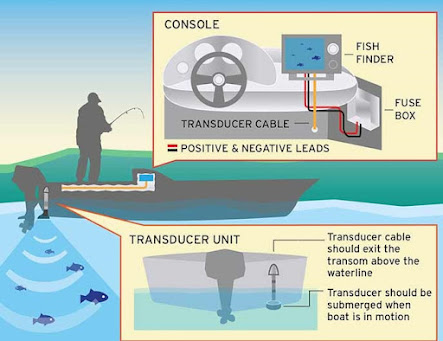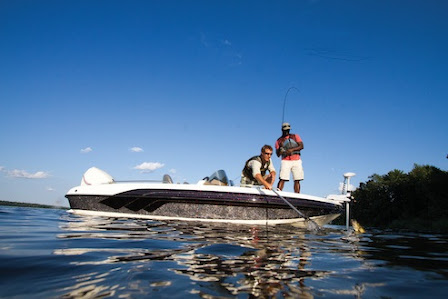EXPLORE WHAT LIES BENEATH: EASY FISHFINDER INSTALLATION FOR EVERYONE
Whether you're a hardcore angler, casual angler, or weekend
traveler, you likely have or want to have a fish finder on board, so installing
or replacing a fish finder is a task you'll likely deal with sooner or later .
Lucky for us, when it comes to container-mounted units that use transom-mounted
transducers—the most common fish finder installations on the water—this is an
easy task you can do yourself. All you need are some tools and know-how, which
you will find right here in this article.
Step 1: Add the Binnacle Mount
Before diving, find a comfortable place for your fish finder
at the head of the plane. Find a center point for the best view, and avoid
awkward overhead positions. Make sure you have space to move the unit without
any issue. Check for any obstructions under the drive and find where the power
components are.
Use a fish finder guide or the container itself to identify
and drill some holes. Drill a hole of
r the wiring, making sure it is not close
to any existing holes. Add a little tack (silicone sealant), place the
container, and secure with nylock nuts.
Step 2: Turn it On
Check whether the wires are the appropriate length; Modify
if necessary. Adhere to the manufacturer's suggested color code and wire size.
Connect the wires using crimped cylindrical objects, and cover them with shrink
tubing. Pass the power cords through the hole, then tighten them every now and
then. Connect to the rudder fuse using the correct connectors.
Step 3: Where to Paste the Power Adapter
Find a good spot behind the back of your boat, away from any
bumps or weird holes. Hold the transducer against something on the back, making
sure it is level and a little above the water's surface. Mark where it should
go, connect the power adapter cord to the dash, and strip off any extra cord.
Drill some pilot holes, add adhesive (3M 5200), and screw it down securely.
Step 4: Wrap it Up
Seal the hole where the wires pass with something small rubber
or sticky material (silicone sealant). Cover it with something airy,
shell-like. Complete all wires, and make sure the battery is off. Connect the
power cords and the power adapter cords.
Wait for the gunk (5200 adhesive/sealant) to dry before
trying it on water. Adjust the height of the power adapter if you want. Once
everything is working perfectly, keep your fish-finder secure with a cover.
Trade in your gear for a fishing rod and enjoy the underwater wonders your new
fish finder brings!
Related Articles !





Comments
Post a Comment